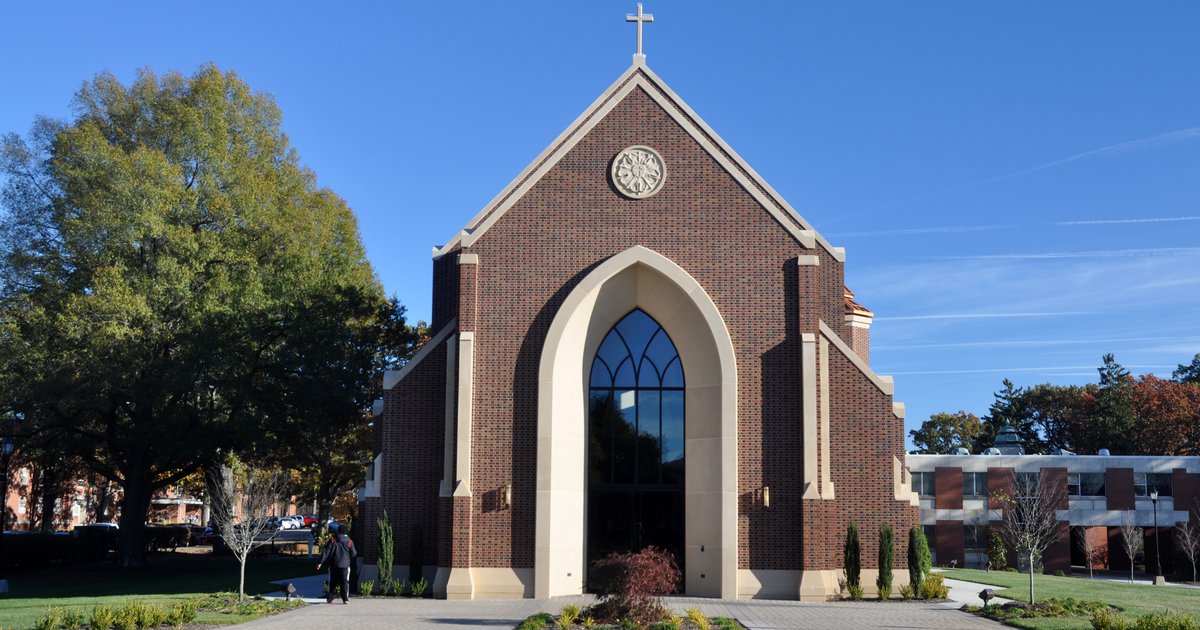Concrete Masonry Units Make Chapel Fit Campus
The Grace Chapel on the Lenoir-Rhyne Univ. campus uses concrete masonry units and exposed interior walls to complement other campus buildings and deliver excellent acoustics. Grace Chapel was built at the heart of the LenoirRhyne Univ. campus in Hickory, NC, and immediately became a spiritual focal point for visitors to the university. The 425-seat chapel serves the needs of weekly religious services as well as music concerts and special events.
Author:George EvansOct 11, 202233.6K Shares1.2M Views

The Grace Chapel on the Lenoir-Rhyne Univ. campus uses concrete masonry units and exposed interior walls to complement other campus buildings and deliver excellent acoustics.
Grace Chapel was built at the heart of the LenoirRhyne Univ. campus in Hickory, NC, and immediately became a spiritual focal point for visitors to the university. The 425-seat chapel serves the needs of weekly religious services as well as music concerts and special events.
Additional support spaces include a pastor’s office, sacristy, and choir-rehearsal space. Designed by architects Clark Patterson Lee, Rochester, NY, the chapel design establishes a physical presence to the university’s origins in the Evangelical Lutheran Church and a religious center for students, faculty, and staff.
The project was designed with a concrete masonry structure with exposed interior walls. Architecturally, the building hearkens to the older campus Neo-Gothic buildings with its exterior Flemish bond-brick pattern, arched openings, cast stone, arched wood beams, and stone-like concrete masonry walls. The chapel’s tower feature was patterned after the nearby Rhyne building.
The concrete-masonry-unit walls consist of architectural split-face, polished-face, and shot-blast units manufactured by Echelon Masonry, Atlanta. All three concrete-unit textures were manufactured with the same material mix so that all of the units would have the same base color and exposed aggregates.
The different textures of the concrete masonry allowed the designers to create wall accents while adhering to a single concrete-masonry wall system. The block is made with a brown aggregate that complements the wood trim used throughout the building.
One of the distinctive features of the chapel is its voluminous space. The interior ceiling is 53 ft. from the floor to the ceiling’s peak. The floor plan is arranged as a cruciform so that, when viewed from above, the chapel appears to be a cross.
While the concrete blocks are used for the building structure, they also provide an interior finish that eliminates the need for other interior finishes. The block’s durability will greatly reduce the need for maintenance and upkeep. In addition, the block’s fireresistant qualities easily met local building-code fire-rating requirements.
Acoustical performance was a high priority for the design team. Concrete masonry was a good choice for managing sound. The space is highly reverberant and perfectly suited for choral and orchestral performances. As a result, only a minimal sound system is required.
Built as part of a $65-million campaign, the 10,000-sq.-ft. chapel blends with its campus surroundings thanks to the selection of concrete masonry for both its structural and aesthetic qualities.

George Evans
Author
George Anderson, an exceptional architectural designer, envisions and brings to life structures that transcend the realm of imagination. With an unwavering passion for design and an innate eye for detail, George seamlessly blends form and function, creating immersive spaces that inspire awe.
Driven by a deep appreciation for the interplay of space, light, and materials, George's innovative approach redefines the possibilities of architectural design. His visionary compositions leave an indelible mark, evoking a sense of wonder and transforming the built environment.
George Anderson's transformative designs and unwavering dedication continue to shape the architectural landscape, pushing the boundaries of what is possible and inspiring generations to come.
Latest Articles
Popular Articles